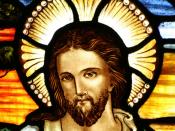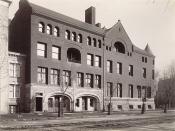As a child, my world was enraptured by the wonderful Fisher-Price toy known as the Lite-Brite. By inserting multicolored little pegs into their corresponding slots on a detailed guide, I could transform drab, dull, and dark pieces of paper into wondrous works of brilliant art. The light that filled and transformed the plastic pegs closely parallel concepts of light and darkness found within the Gospel of John and in Sophocles' drama Antigone. The Gospel of John focuses on the profound meaning of the life of Jesus, whom he saw as the manifestation of God's Word (logos). Teiresias, of Sophocles' play Antigone, is a blind prophet whose lack of vision does not prevent him from recognizing the truth. The words of John and the characterization of Sophocles, although similar in many aspects, differ in the extent to which their concepts of light and darkness affect humanity. Sophocles' light, in the form of Teiresias, allows truth to permeate throughout one's lifetime.
John's light, as the manifestation of the logos, presents truth and enlightenment to humanity, but also ensures a glorified and joyous afterlife through Christ's salvation.
Teiresias, the voice of fate and harbinger of truth in Sophocles' play Antigone, humbly enters the drama by addressing the malevolent Creon and stating that he 'must walk by another's steps and see with another's eyes' (Antigone, 102). The wise prophet was metaphorically declaring that he delivered the message of a higher truth. This truth existed as Natural Law. Teiresias advised his monarch to choose a different course in life. His divine vision more than compensated for his lack of physical sight, for it allowed him to walk on a wise and virtuous path. The sage shared the knowledge and truth that he perceived with others who were too caught up in conventional matters to...


